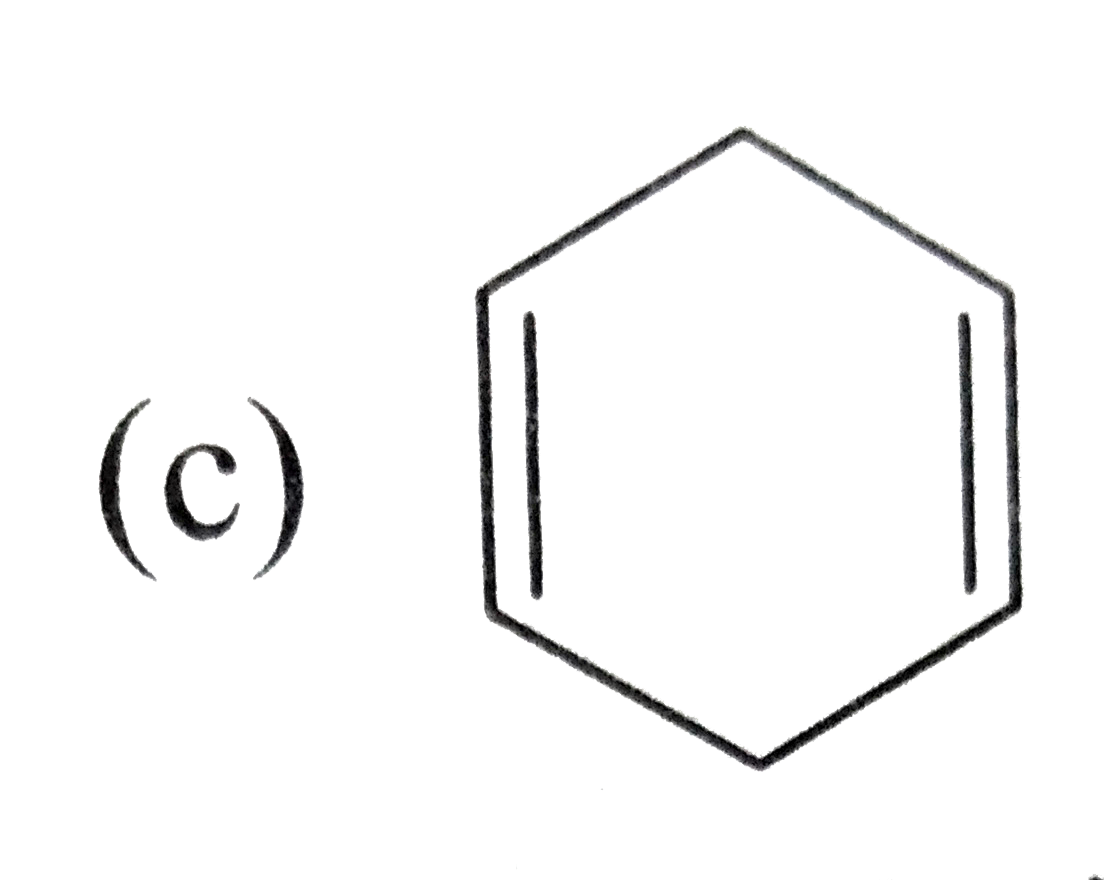1, 2 - Dibromocyclohexane on dehydrobromination gives:
To solve the question regarding the product of the dehydrobromination of 1,2-dibromocyclohexane, we can follow these steps:
1. Identify the Structure of 1,2-Dibromocyclohexane:
- 1,2-dibromocyclohexane has two bromine atoms attached to the first and second carbon atoms of a cyclohexane ring.
2. Understand Dehydrobromination:
- Dehydrobromination is a reaction where both a hydrogen atom and a bromine atom are removed from adjacent carbon atoms. In this case, we will be removing HBr from the 1 and 2 positions.
3. Locate the Hydrogen Atoms:
- In addition to the bromine atoms, each of the carbon atoms (C1 and C2) also has hydrogen atoms. Specifically, C1 has one hydrogen atom, and C2 has one hydrogen atom.
4. Remove HBr:
- During the dehydrobromination process, we will remove one bromine atom and one hydrogen atom from the first carbon (C1) and one bromine atom and one hydrogen atom from the second carbon (C2). This results in the formation of a double bond between C1 and C2.
5. Resulting Structure:
- After the removal of HBr from C1 and C2, the remaining structure will have a double bond between C1 and C2, and the remaining carbons in the cyclohexane will still be saturated. The resulting compound will be a diene.
6. Name the Product:
- The product formed is known as cyclohex-1,3-diene, which has double bonds at the 1 and 3 positions of the cyclohexane ring.
Final Answer:
1,2-Dibromocyclohexane on dehydrobromination gives cyclohex-1,3-diene.
---
- 1,2-dibromocyclohexane has two bromine atoms attached to the first and second carbon atoms of a cyclohexane ring.
- Dehydrobromination is a reaction where both a hydrogen atom and a bromine atom are removed from adjacent carbon atoms. In this case, we will be removing HBr from the 1 and 2 positions.
- In addition to the bromine atoms, each of the carbon atoms (C1 and C2) also has hydrogen atoms. Specifically, C1 has one hydrogen atom, and C2 has one hydrogen atom.
- During the dehydrobromination process, we will remove one bromine atom and one hydrogen atom from the first carbon (C1) and one bromine atom and one hydrogen atom from the second carbon (C2). This results in the formation of a double bond between C1 and C2.
- After the removal of HBr from C1 and C2, the remaining structure will have a double bond between C1 and C2, and the remaining carbons in the cyclohexane will still be saturated. The resulting compound will be a diene.
- The product formed is known as cyclohex-1,3-diene, which has double bonds at the 1 and 3 positions of the cyclohexane ring.
1,2-Dibromocyclohexane on dehydrobromination gives cyclohex-1,3-diene.
Similar Questions
Explain the stereochemistry of the products from E2 dehalogenation with IΘ of the following.
a. (i) Meso −2−3−dibromobutane and (ii) S,S−2,3− dibromo− butane.
b. E2− dehydrobromination of (i) R,R−2,3− dibromobutane and (ii) meso−(R,S)−2,3− debromobutane
c. From which conformation of bromocyclohexane in the E2 dehydrobromination is best achieved.
View Solution1,2 di bromo cyclohexane on dehydrohalogenation gives
View Solution
Knowledge Check
1,2-dibromo cyclohexane on dehydrogenation gives :
A B
B C
C DNone of these
DNone of these1,2-dibromo cyclohexane on dehydrogenation gives :
A B
B C
C Dnone of these
Dnone of these1,2 di bromo cyclohexane on dehydrohalogenation gives
A B
B C
C DNone of these
DNone of these
Allybromide on dehydrobromination gives
View SolutionAn organic acid 'A' (C5H10O2)reacts with Br2 in presence of phosphorus to produce a resolvable compound, which on dehydrobromination gives an unsaturated acid. The unsaturated acid does not show geometrical isomerism and decarboxylation gives alkene. Alkene on ozonolysis on gives two compounds, one gives positive Schiff's test while the other does not. The organic compound A is :
View SolutionWhich of the following molecules have zero dipole moment?
(I) gauche conformation of 1, 2 - dibromoethane.
(II) anti conformation of 1, 2 - dibromoethane.
(III) trans - 1, 4 - dibromocyclohexane
(IV) cis - 1, 4 - dibromocylohexane
(V) tetrabromomethane.
(VI) 1, 1- dibromocyclohexane
View SolutionWhich of the following molecules have non-zero dipole moments ?
(I) Gauche conformation of 1, 2 -dibromoethane
(II) Anti conformation 1,2-dibromorthane
(III) Trans-1,4 -dibromocyclohexane
(IV) Cis-1, 4-dibromocyclohexane
(V) Tetrabromomethane
(VI) Dibromocychexane
View SolutionWhich of the following molecules have non-zero dipole moments ?
(I) gauche conformation of 1,2-dibromoethane
(II) anti conformation of 1,2-dibromoethane
(III) trans-1,4-dibromocyclohexane
(IV) cis1,4-dibromocyclohexane
(V) tetrabromomethane
(VI) 1,1-dibromocyclexane
View Solution
